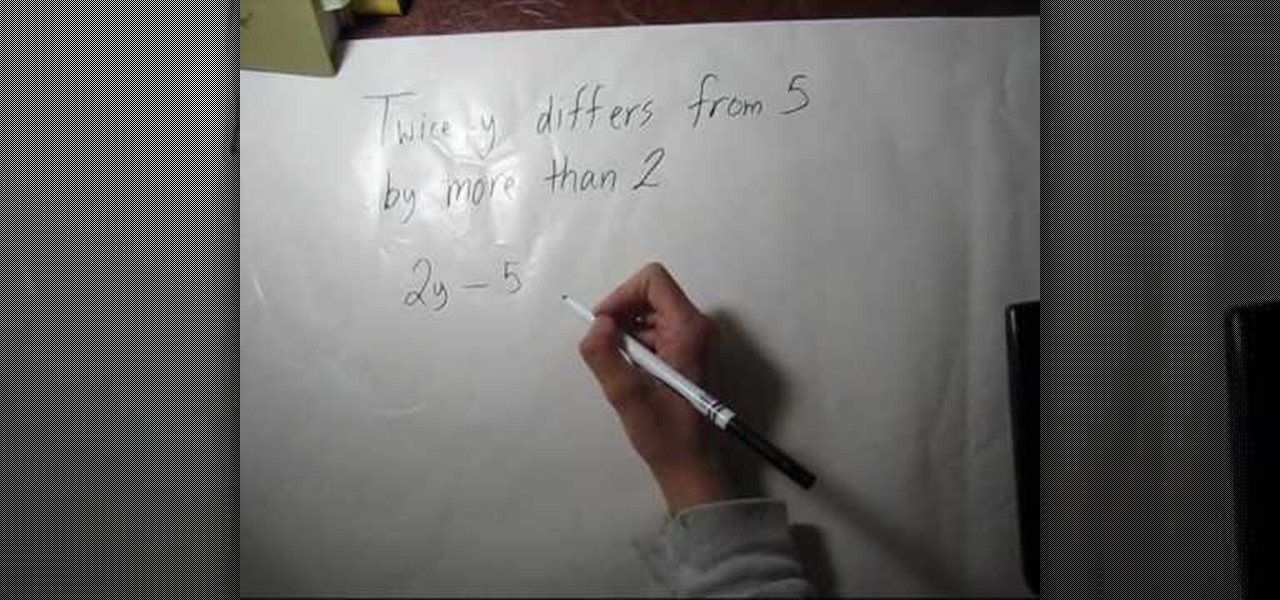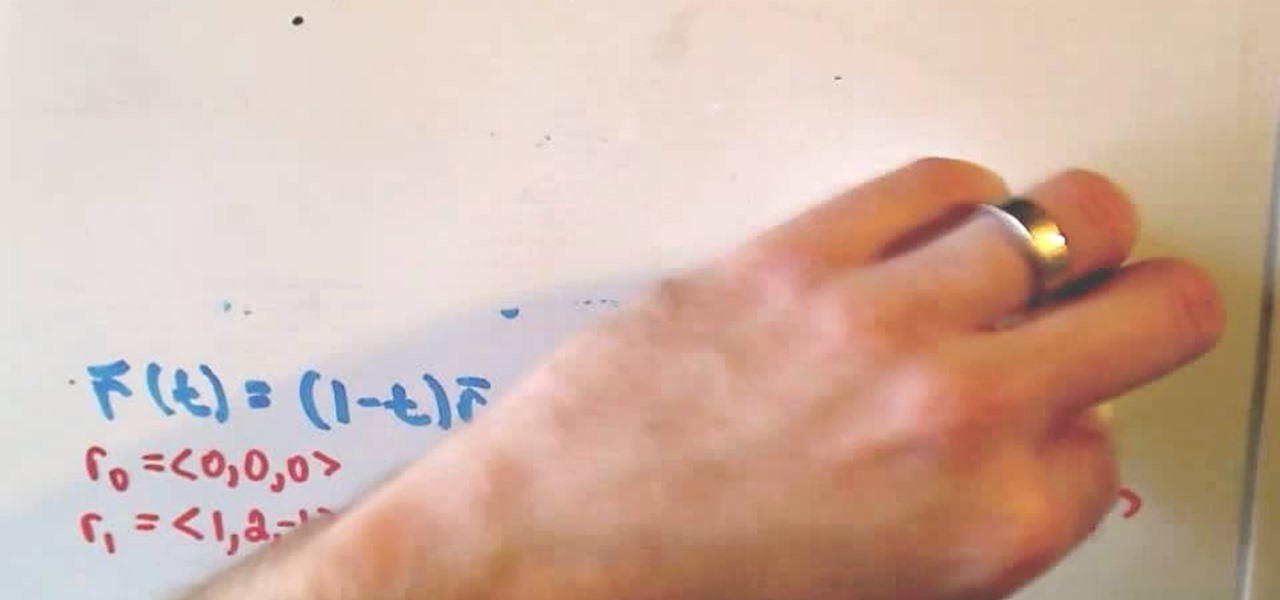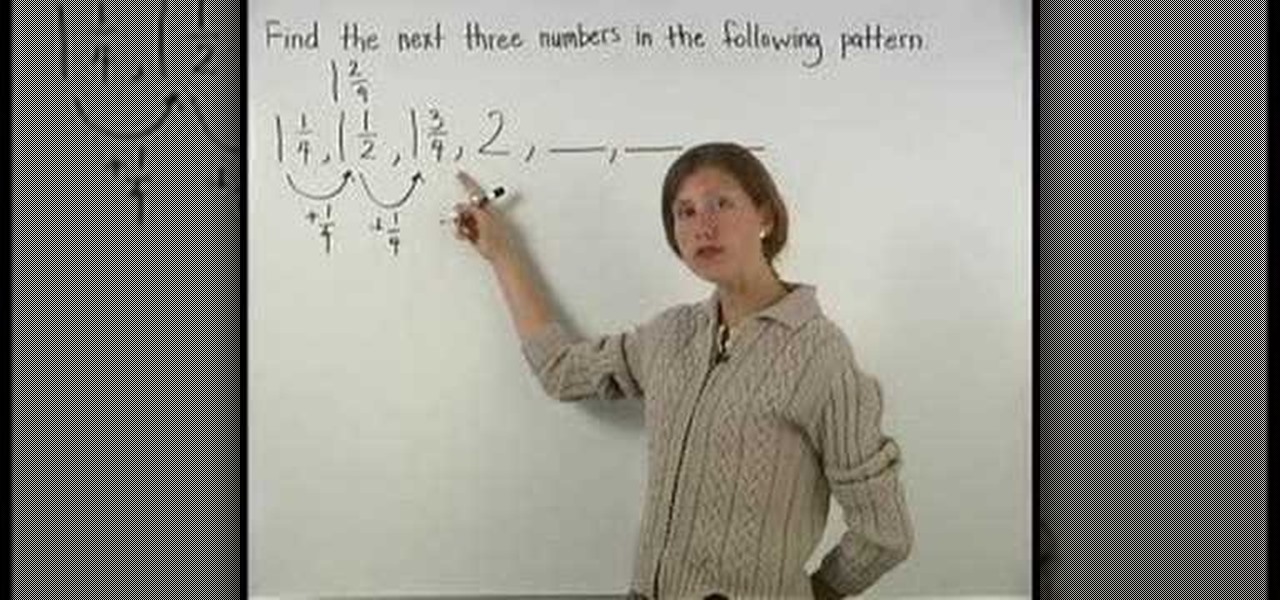Active Math Posts

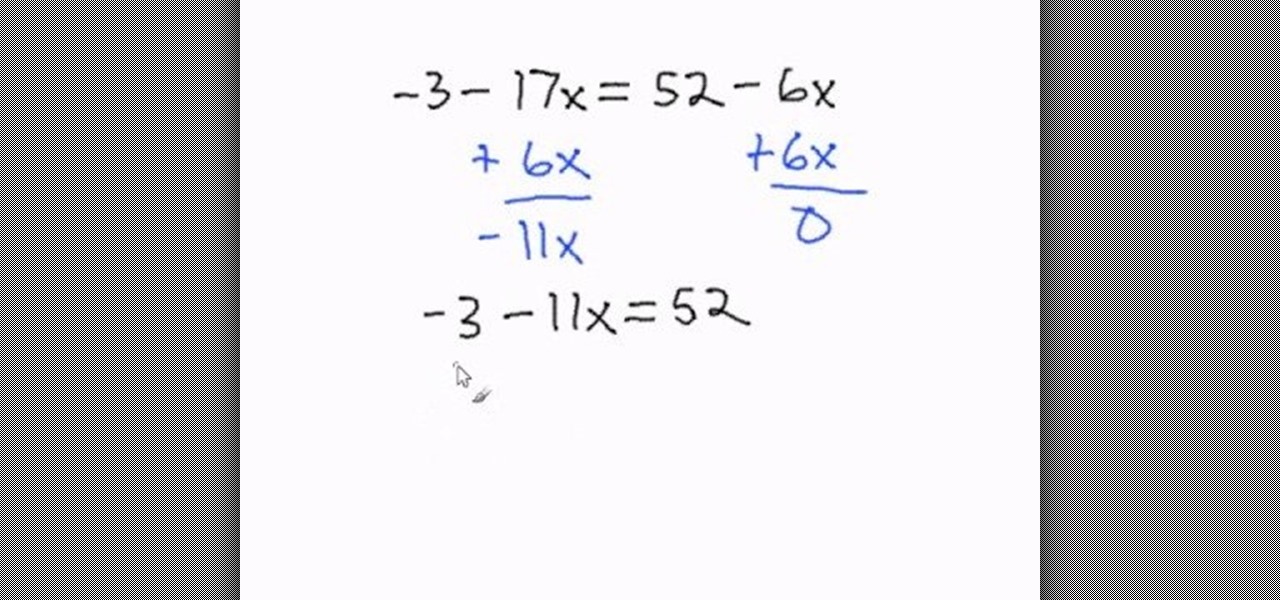
How To: Solve multi-step equations with variables on both sides
This video is aimed at beginner level viewers and shows one of the basic techniques involved while solving linear equations having one variable.
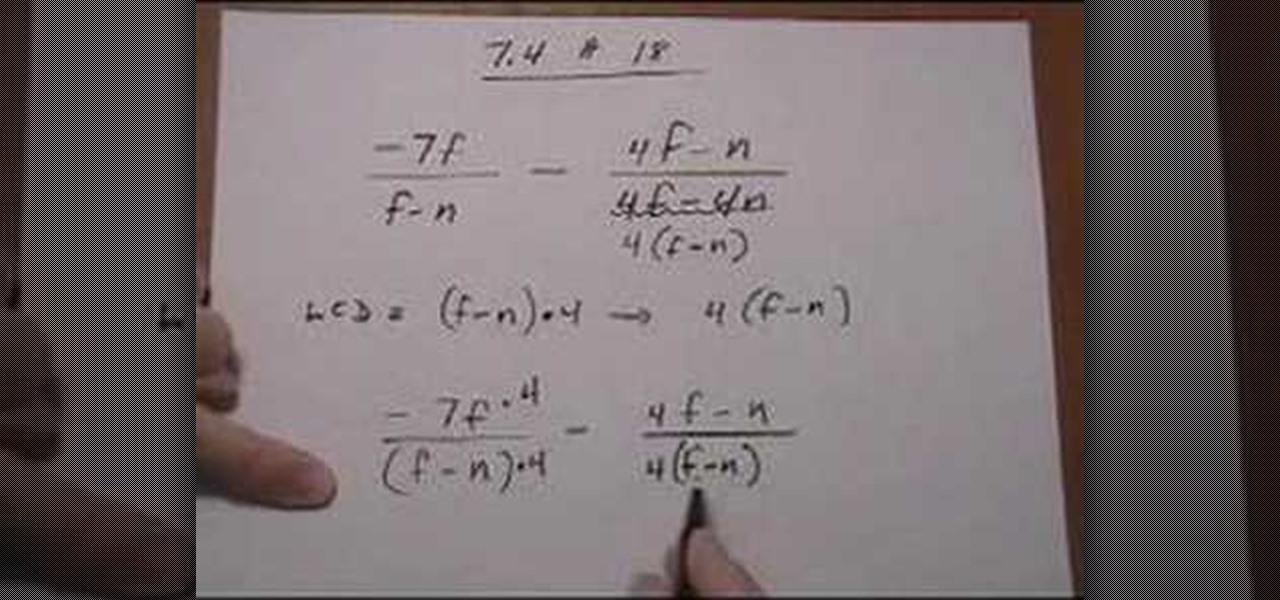
How To: Subtract rational expressions
In this video, we learn how to subtract rational expressions. To start, you will need to find common denominators. To do this, factor out the denominators in the fractions on both sides of the equations. Now you need to build the lowest common denominator for these two fractions. To do this, take the first denominator and take whatever is missing from the second. After you do the math for this, you will build new fractions with the common denominator as the denominator. Leave the denominator ...

How To: Understand angle relationships
In this tutorial, we learn how to understand angle relationships. Start out by drawing an angle out and looking at the different parts of it. From here, you will start to find where the different angles are. Linear pairs equal 180 degrees and are on a straight line. Once you learn this, you can write them out on the paper. Supplementary angles equal 180 degrees as well. Two angles that add up to 90 degrees are complimentary angles. Once you learn the relationships between angles, you can bett...

How To: Understand completing the square
In this video, we learn how to understand completing the square. First, you will write the quadratic expression out. Then, you will write the open bracket so you write it out in the correct format. Now, find the number in front of the 'x' term, which is the coefficient. Then, write this number on the other side of the equation in the parenthesis. From here, you will need to follow the proper rules of math to find out what the square is equal to. When you are finished, make sure you label the ...

How To: Factor a trinomial by grouping
Factor a trinomial by grouping
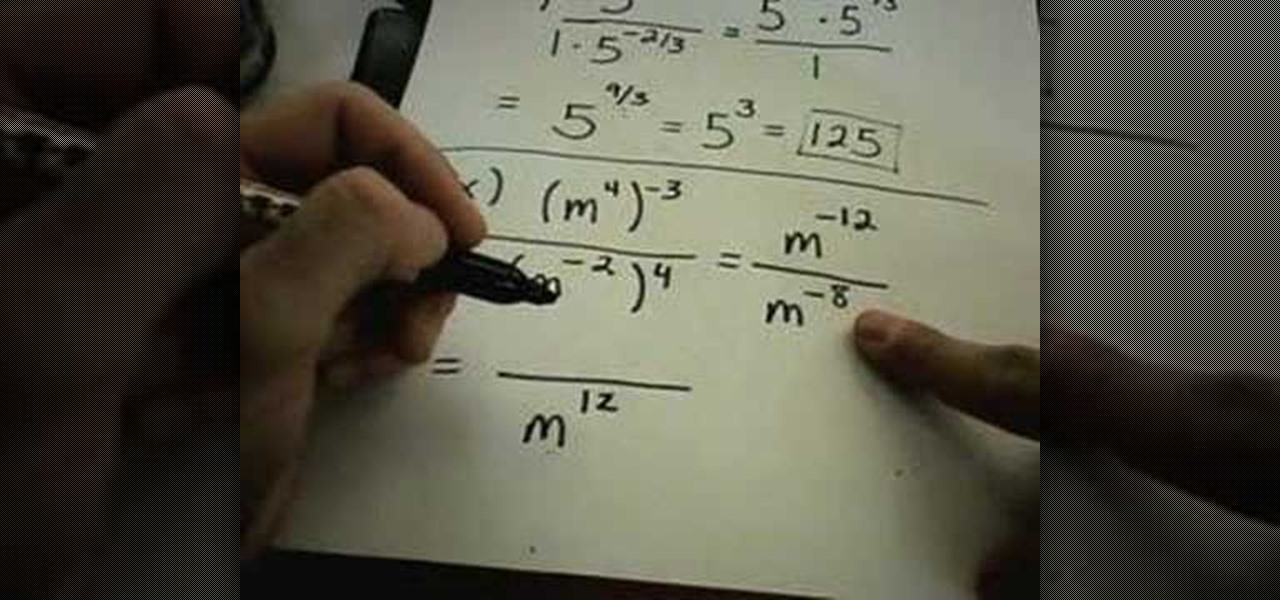
How To: Understand negative exponents
In this video, we learn how to understand negative exponents. The one rule you have to remember is when you have a number with a negative power, then you need to divide it over one. You can take this term and put it in the denominator of your fraction to make it a positive exponent. For example, if you have 5 to the -1, then you can move the 5 to the denominator and get 1/5, which is the same exact thing! This is one of the most basic rules in math. Once you understand this, simplifying fract...
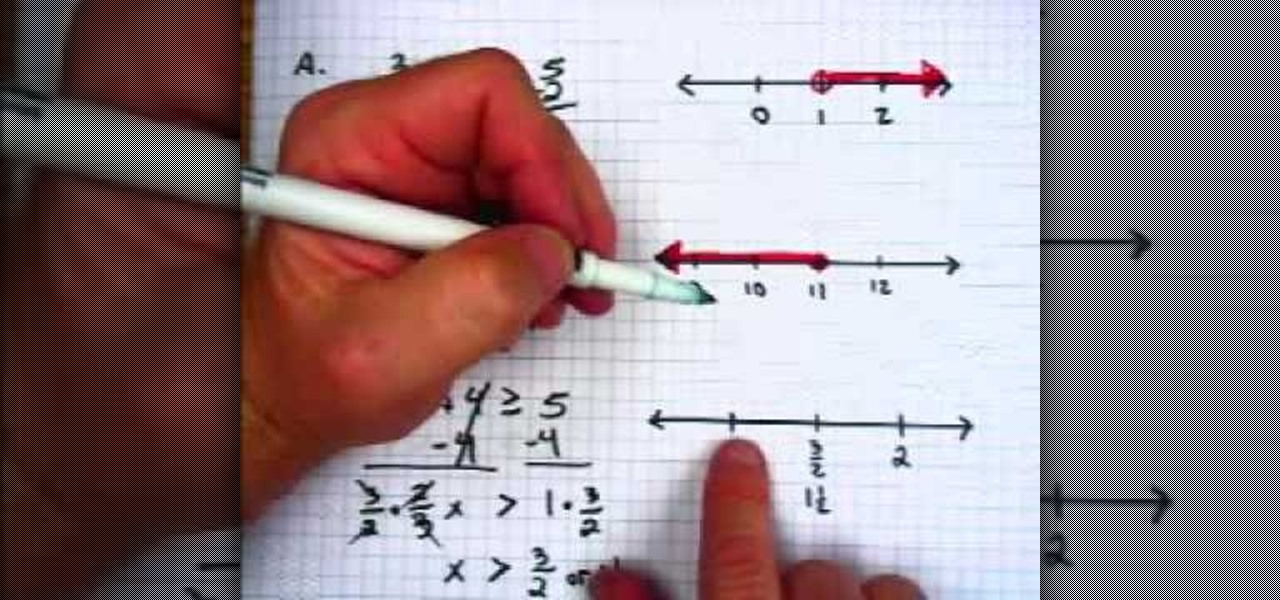
How To: Graph inequalities on a number line
In this video, we learn how to graph inequalities on a number line. Inequalities have a greater than or less than sign instead of an equal signs. Remember that these are no different than figuring out how to graph normal equations. First, you will need to remove the single numbers from each side of the equation. Continue to do math on the equation until you figure out what 'x' is. From here, draw the numbers on your graph and then find the number that 'x' is greater to or less than. Use an op...

How To: Add rational expressions
In this tutorial, we learn how to add rational expressions. When you have two rational expressions, you will first need to factor every denominator. After this, find the lowest common denominator from all of them. After this, rewrite every fraction so it has the lowest common denominator for the denominator. Leave it in factored form for the denominators. Multiply the top and the bottom to find the answer for each of the fractions in the equation. When finished, make sure you find the most si...

How To: Use a unit circle to find trig values
In this tutorial, we learn how to use a unit circle to find trig values. The unit circle has a radius one, use the definition of the trig functions to figure this out. Write them down if you need to, to remember what they are. You will also need two special triangles to help figure this out. Make sure you know the short side is opposite 30 degrees. Now, draw out your graph and find the ordered pair of pie, then find the y value of it. From here, find the cosine, tangent, and other units using...

How To: Rationalize square roots
In this tutorial, we learn how to rationalize square roots. You cannot have square roots in the denominator of an equation. You need to multiply so the square root goes away. You can do this by multiplying the top and bottom of the equation by the bottom denominator. From here, this will make the square root go away, so your equation will be normal numbers. After you have done this, you will have the equation answered and you will be able to simplify it to find the end answer. You can do this...

How To: Graph a parabola
With this tutorial, we learn how to graph a parabola. The way you can tell it's parabola is that the 'x' value will be squared. With a line, 'y' and 'x' are not squared. The 'a' is the number in front, which will also be the coefficient in the graph. 'B' will be the number following that and 'c' will be the last number. Once you identify these, remember that they are always numbers. From here, you can draw out your graph. Follow the numbers that you just listed and then you can graph it out c...

How To: Calculate a limit at infinity with a radical
In this video, we learn how to calculate a limit at infinity with a radical. The idea is to take out the higher power of 'x' in the denominator first. If the x squared is under a radical, take that out so you're left with just 'x'. After this, divide every term by 'x'. Once you are finished with this, you can rewrite the equation. Next, you will use the rules of math to find the answer of the equation. This is hard math to do if you aren't used to it! Make sure you practice with the samples i...
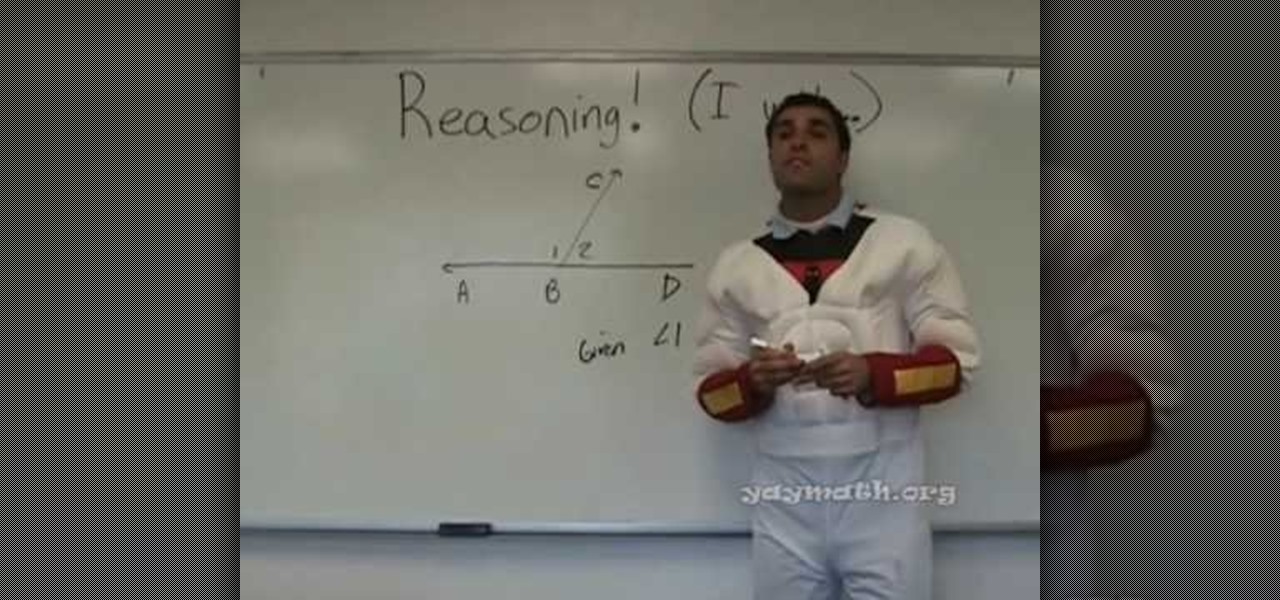
How To: Use inductive reasoning
In this tutorial we learn how to use inductive reasoning. Start out with your equation that is giving you your statement. You need to prove whether this is true or not by figuring out the equation. Look at the different angles to see if they are a linear pair and then see if they are the same. Compare them to see if they add up to 180 degrees and use your mathematical logic. Once you understand the backbone to doing this type of math and what the exceptions are, then you will be able to figur...

How To: Find the arc length of a function
In this tutorial, we learn how to find the arc length of a function. All you're doing when finding arc length is finding the curve between 'a' and 'b'. Imagine this as a string you're pulling straight to see how long it is going to be. The formula says if your function is in 'y=x' you have to take one times the derivative squared. This is a basic formula that you will use to find the arc length. When you plug in your values to this equation, you will find the answer. Practice with the example...

How To: Graph a parabola
In this tutorial, we learn how to graph a parabola. Quadratic functions are parabolas. To graph these, you will first need to look at the function, which is the set of outputs for a set of inputs. Write this out on a t-chart to find what your 'x' and 'y' values are. Once you find these, you will plug in the coordinates to a graph. After you have written down the coordinates, you can graph your parabola. This is easy to do if you are familiar with quadratic functions and good at math. Just pra...

How To: Determine if lines are parallel or perpendicular
In this tutorial, we learn how to determine if lines are parallel or perpendicular. You will be given two straight line equations. First, remember that parallel lines have equal slope, identical to each other. Perpendicular lines have negative reciprocal slopes. For example, 2/3 and -3/2 would be a perpendicular line. If you think of parallel lines, then you can graph them to see what they look like when written down. Then, graph the other lines to see what they look like as well. Once you un...
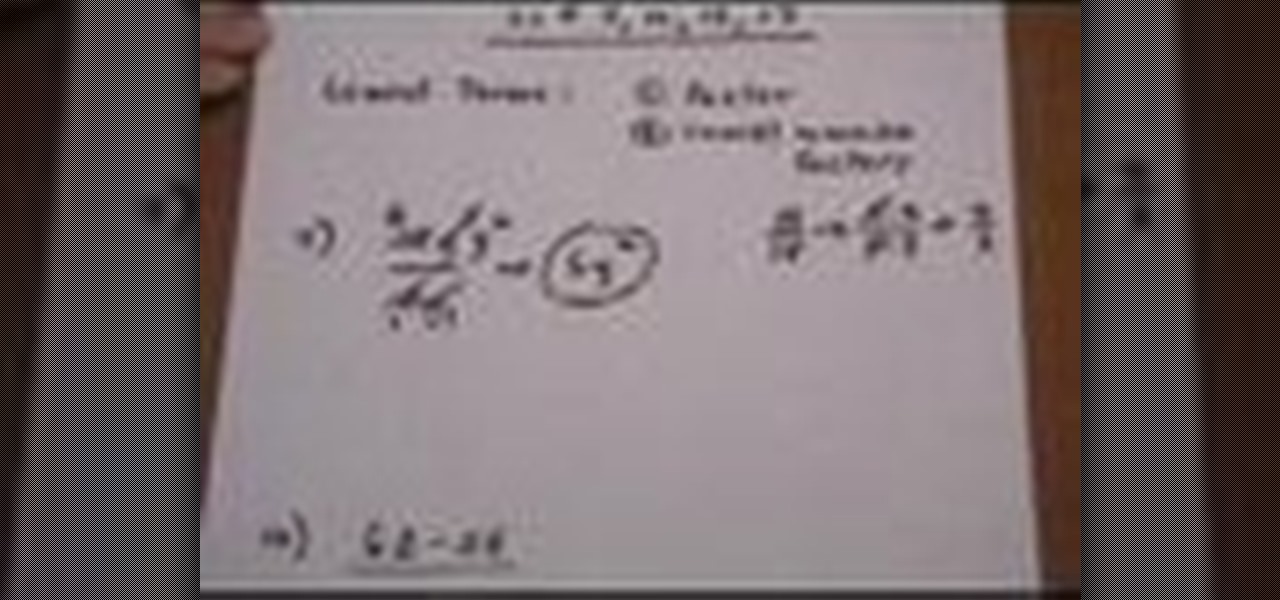
How To: Put rational expressions in lowest terms
Putting a rational expression in its lowest terms (also called "reduction") is a bit tricky, but it becomes very easy once you know a few tricks.
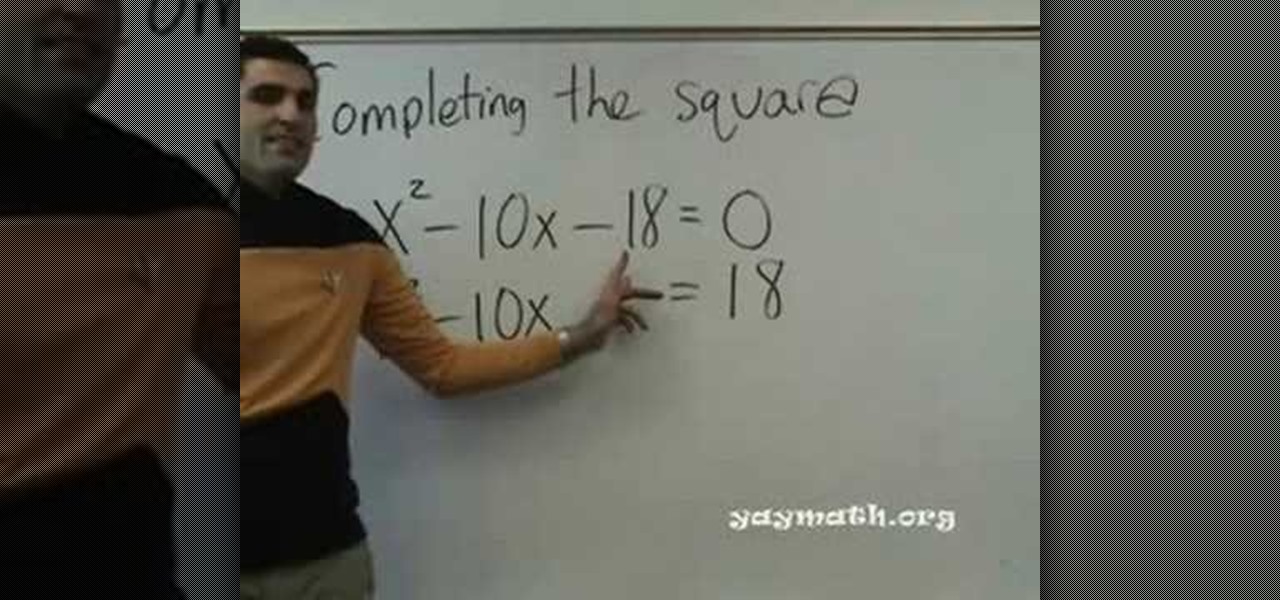
How To: Complete the square
Quadratic equations are easy to solve when they can be factorized. This video teaches another method of solving a quadratic equation when its not easy to find factors for it.

How To: Subtract rational expressions
In this tutorial, we learn how to subtract rational expressions. If they have different denominators, you will first need to get them the same denominator. To do this, you will need to find the lowest common denominator. Factor the denominators that you have and figure out what the lowest common denominator of each of them are. From here, you can simplify the rational expressions in your equations. Next, you can go across the board and subtract the fractions from each other. To finish this up...
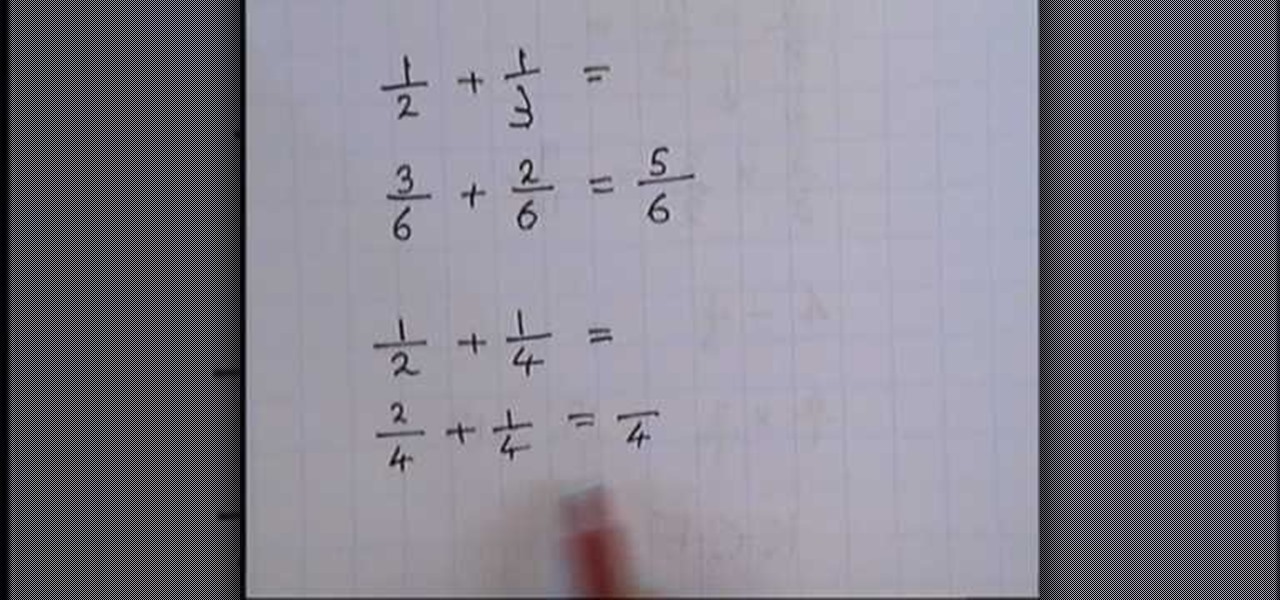
How To: Add fractions together
In this video, we learn how to add fractions together. First, try doing a simple equation like 1/2 + 1/2. From here, you will simply just add together across the board. Once you get the answer, it will be 2/4, but you must simplify this so it's lower. Check this and do the reverse to make sure it's correct. Do this for all of the fractions that come your way and you will be doing fractions more easily each time! Just make sure you simplify when you reach the end, or the answer will not be cor...

How To: Find the formula of a given sequence
In this tutorial, we learn how to find the formula of a given sequence. First, you need to decide what you're starting with. Start with a1, then continue on with a2, a3, and a4. Eventually, you will have an "An". You will have an "n" in your numerator and the denominator will start between the numbers of your fractions. Look to see if that works, then you have to see where the signs alternate on the fractions. Write in any negatives that you have, then figure your power out. Once you follow t...
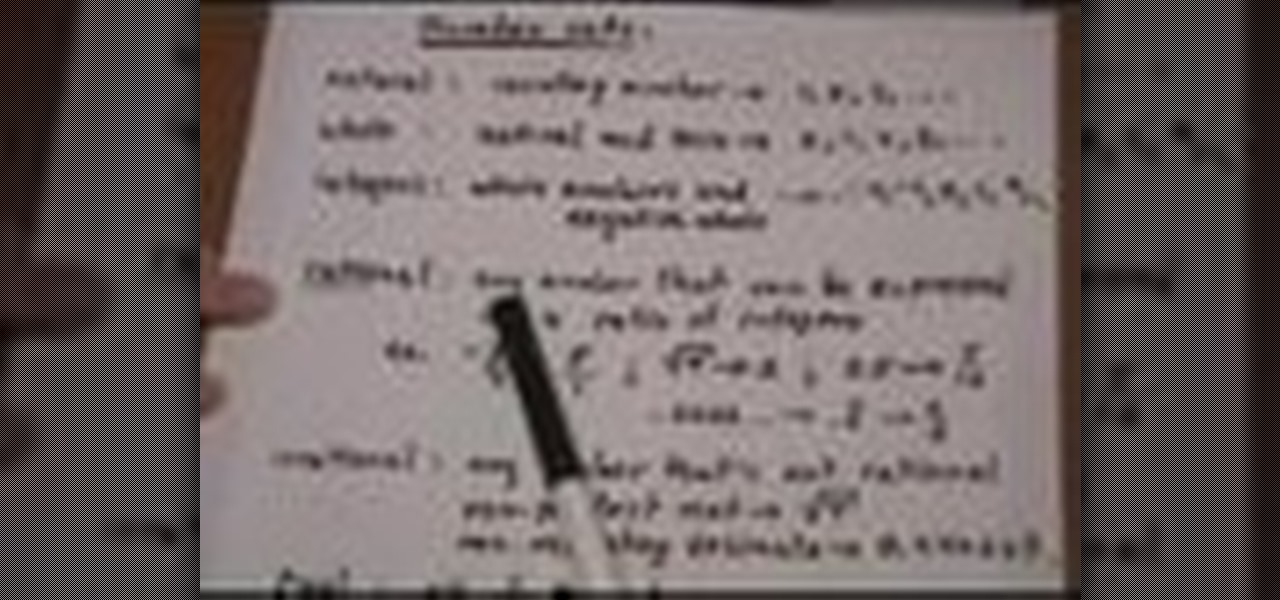
How To: Identify number types
In this video, we learn how to identify number types. You will need to figure out what numbers from a list is a rational numbers in your math equations. A natural number is a counting number (1,2,3). A whole number is a natural number and zero (0,1,2,3). An integer is a whole number and a negative whole (-2,-1,0,1,2). A rational number is any number that can be expressed as a ration of integers. An irrational number is any number that's not rational and non-perfect. Once you understand these ...

How To: Determine if you have a function
In this tutorial, we learn how to determine if you have a function. You will start off with two functions and their points. The 'x' values make up the domain of the function and the 'y' values make up the range. The input values are the domain and the output are the range. If you're checking to see if you have a function, you will need one 'y' for every 'x'. This means that each value has another one that goes with it. Each of the points need to have one partner with them, no more and no less...

How To: Rationalize the denominator
In this video, we learn how to rationalize the denominator. This says that if there is a square root or any type of root, you need to get rid of them. Look at the examples given in the video to get an idea of what types of roots you will be removing and how to do it. To get rid of a square root, all you really have to do is to multiply the top and bottom by that same square root. Do this on all of your problems with a square root and they will be gone in just a matter of minutes!

How To: Multiply a number by zero in basic mathematics
With this free video math lesson, you'll learn how to do multiply any number by zero. With mathematics, as with anything else, not everyone progresses at the same rate. Basic math is no exception. Happily, in the age of Internet video tutorials, this isn't a problem. Those who progress quickly can go beyond what's being taught them and those who are struggling likewise have all the time in the world to catch up.
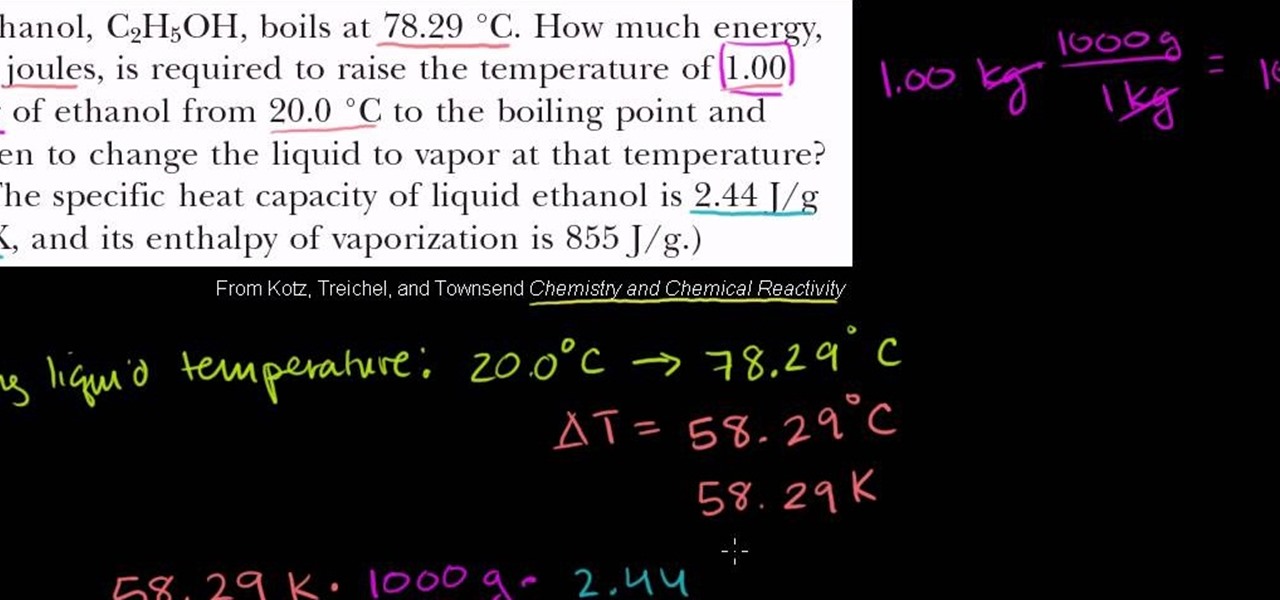
How To: Solve change of state problems in organic chemistry
In this free video chemistry lesson from Salman Khan, we learn about specific heat capacity and vaporization. Whether you need help studying for that next big test or could just use a hand finishing your homework, you're sure to be well served by this video lesson. For all of the details, take a look.

How To: Work with amides, anhydrides, esters and acyl chlorides in chemistry
In this free video chemistry lesson from Salman Khan, we learn how to work with carboxylic acid derivatives. Whether you need help studying for that next big test or could just use a hand finishing your homework, you're sure to be well served by this video lesson. For more information, including detailed, step-by-step instructions, take a look.

How To: Divide a two-digit number into a three-digit number
With this free video math lesson, you'll learn how to do long division with double and triple-digit numbers. With mathematics, as with anything else, not everyone progresses at the same rate. Basic math is no exception. Happily, in the age of Internet video tutorials, this isn't a problem. Those who progress quickly can go beyond what's being taught them and those who are struggling likewise have all the time in the world to catch up.

How To: Explore and decipher fractal geometry and self-similar mathematics
There wouldn't be any chaos in the world without Benoit Mandelbort— chaos theory, that is. Mandelbrot, who just passed away at the age of 85, pioneered fractal geometry and greatly influenced chaos theory. He spent most of his life working in physics, biology and astronomy, and is best known for his Mandelbrot Set, a mathematical set of points in the complex plane (the boundary of which forms a fractal).
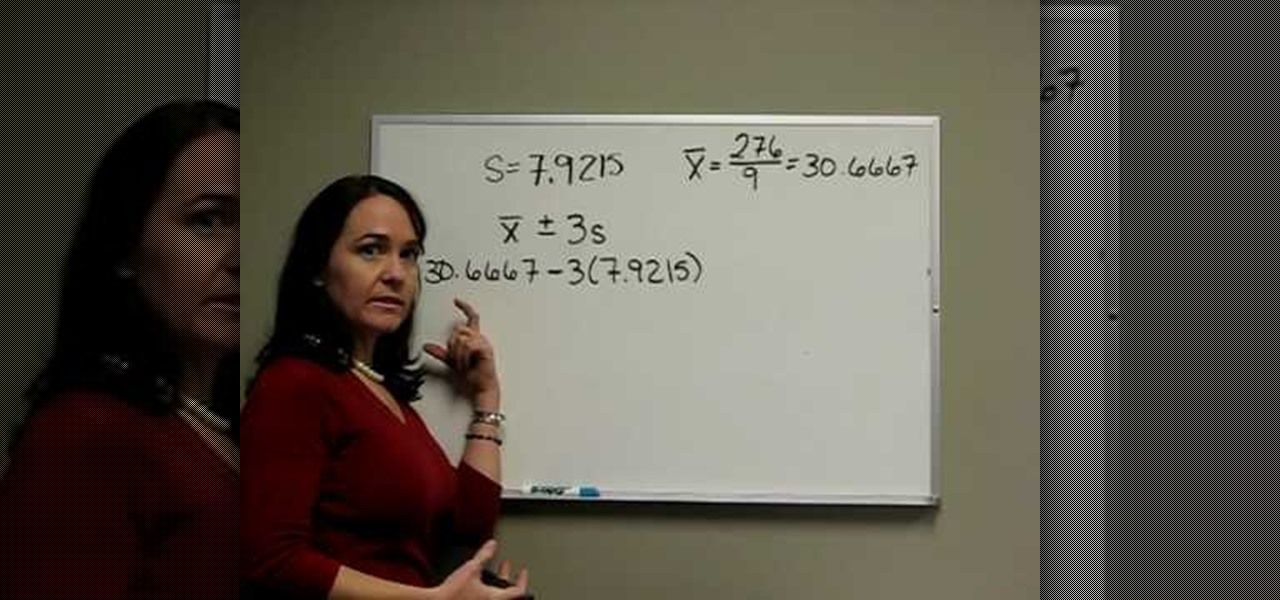
How To: Interpret a standard deviation
A rough definition of standard deviation is that it is a measure of expressing the observed variations about the average in statistical data i.e. by how much do the observed values vary from the mean. This video continues from the previous solved example and demonstrates the mathematical interpretation of the standard deviation that was calculated. We begin with stating the mean and standard deviation values and then calculating the upper and lower bounds of the data based on the standard dev...
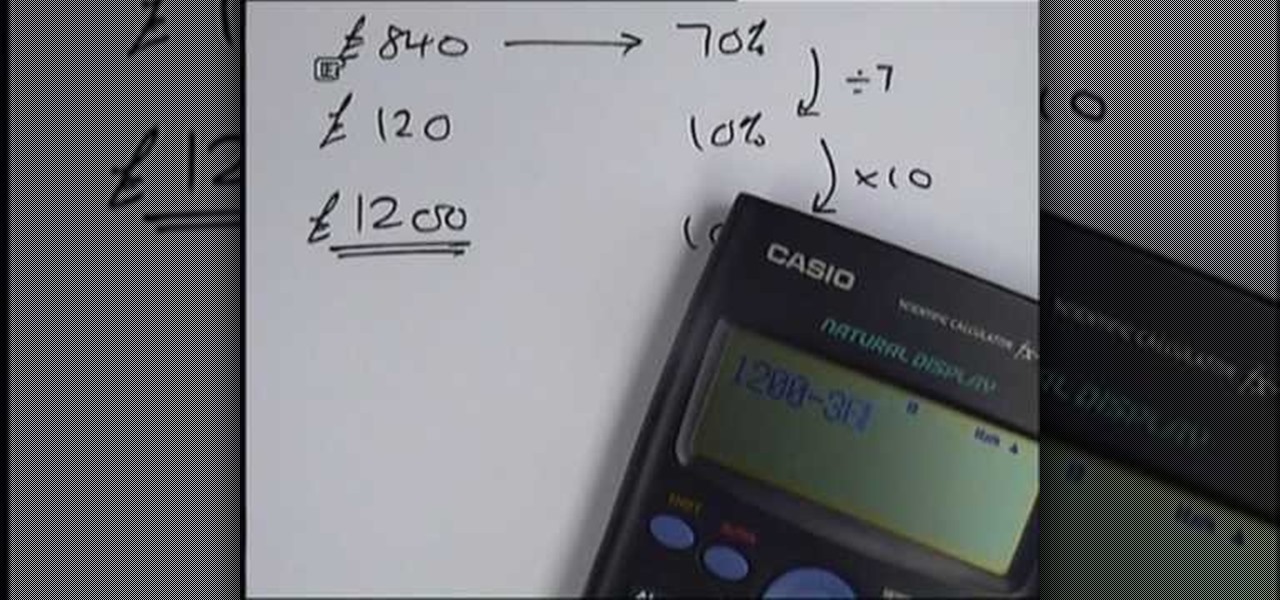
How To: Solve reverse percentage problems
We know the method for answering the question "What is the x percent of y" but, what about the answer to the following question "The x percent discounted price of an article is y. Find the original price." This is a reverse percentage problem that can be solved using the method shown in this video. This video contains three reverse percentage problems. The first two problems are essentially of the same type as explained above. A simple and easy to understand method of finding the original pri...

How To: Increase or decrease by a percentage
In this video, we learn how to increase or decrease by a percentage. First, to increase you will need to find what the percent of the number is. To do this, you will find 10%, which should be very easy. As soon as you've found this, you can add or subtract to find the percent you need. Then, add this onto the original number and you'll know the percentage. To decrease the percentage, you will do the same type of equation. Except, you will need to subtract as you go to finish the problem. When...

How To: Evaluate functions by substituting in the variable to the input given
In this video, we learn how to evaluate functions. When evaluating functions, you substitute in the variable to the input given. Once you do this, you will rewrite the equation filing in the appropriate spots with the numbers that you are given. After this, you will evaluate the equation with the proper steps in math. Once you have figured out the problem, you can do this in reverse to make sure you have the correct answer. This is a very easy process and it doesn't take that long. Just make ...
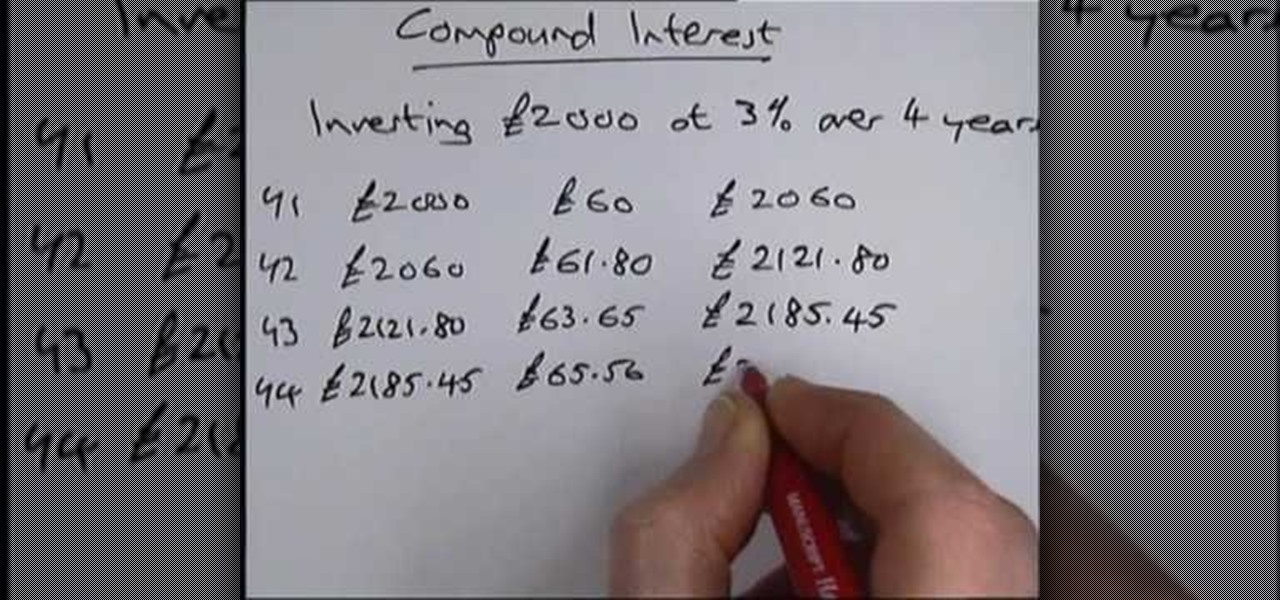
How To: Calculate compound interest in math
In this video, we learn how to calculate compound interest. Start with your example of investing $2000 at 3% interest over four years. Now, write down how much you have at the start of year one. To find the percent of this you will need to simply do the amount divided by one hundred and times it by three. Then, you will find the number for the amount of interest you had for that year. Continue to do this for each year and the amount of money you will increase each year. Do this until you reac...

How To: Calculate the volume of a cube in basic geometry
With mathematics, as with anything else, not everyone progresses at the same rate. Geometry is no exception. Happily, in the age of Internet video tutorials, this isn't a problem. Those who progress quickly can go beyond what's being taught them and those who are struggling likewise have all the time in the world to catch up. With this free video math lesson, you'll learn how to calculate the volume of any cube.
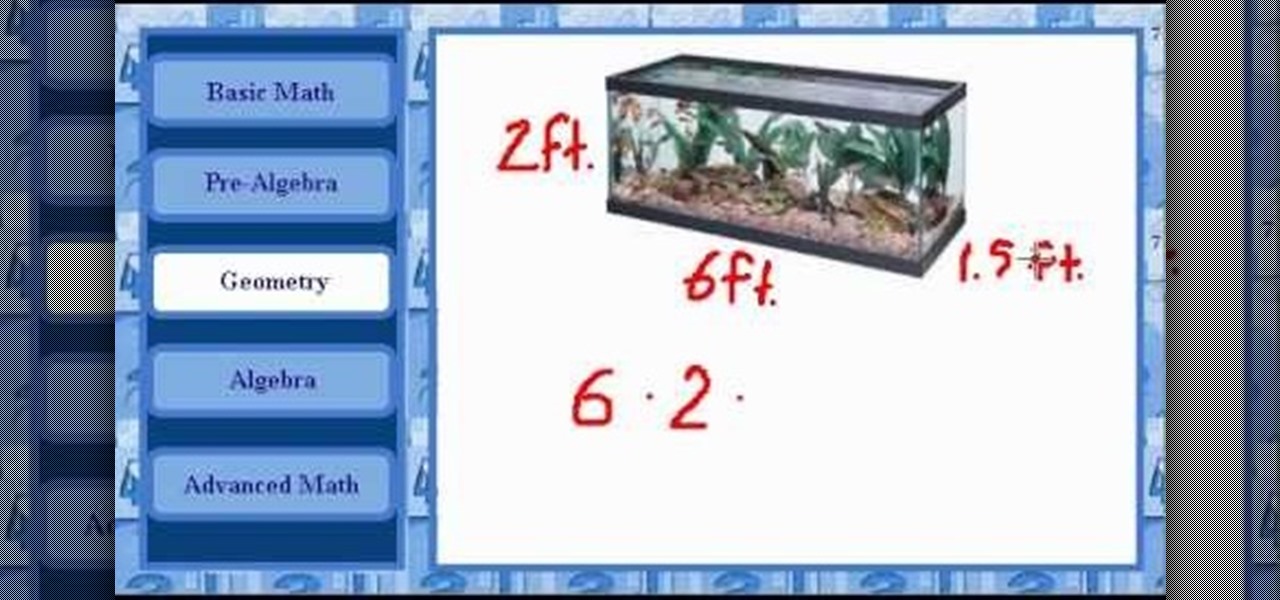
How To: Calculate the volume of a rectangular solid
With mathematics, as with anything else, not everyone progresses at the same rate. Geometry is no exception. Happily, in the age of Internet video tutorials, this isn't a problem. Those who progress quickly can go beyond what's being taught them and those who are struggling likewise have all the time in the world to catch up. With this free video math lesson, you'll learn how to calculate the volume of a rectangular solid.
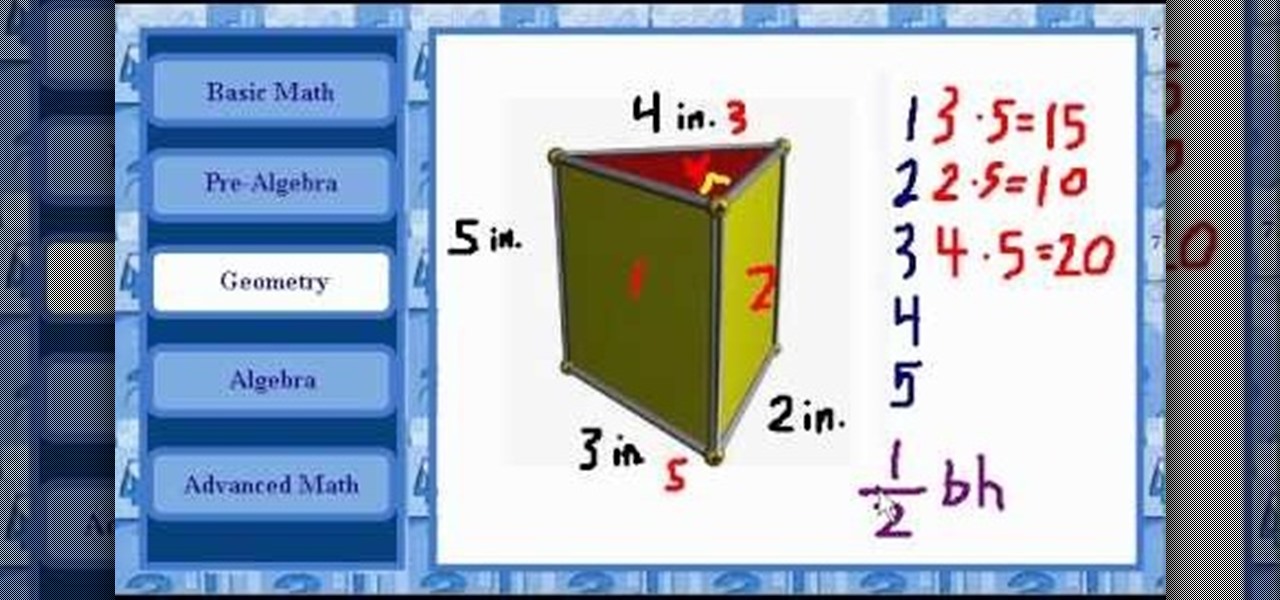
How To: Calculate the surface area of a triangular solid in geometry
With mathematics, as with anything else, not everyone progresses at the same rate. Geometry is no exception. Happily, in the age of Internet video tutorials, this isn't a problem. Those who progress quickly can go beyond what's being taught them and those who are struggling likewise have all the time in the world to catch up. With this free video math lesson, you'll learn how to calculate the volume of a prism.
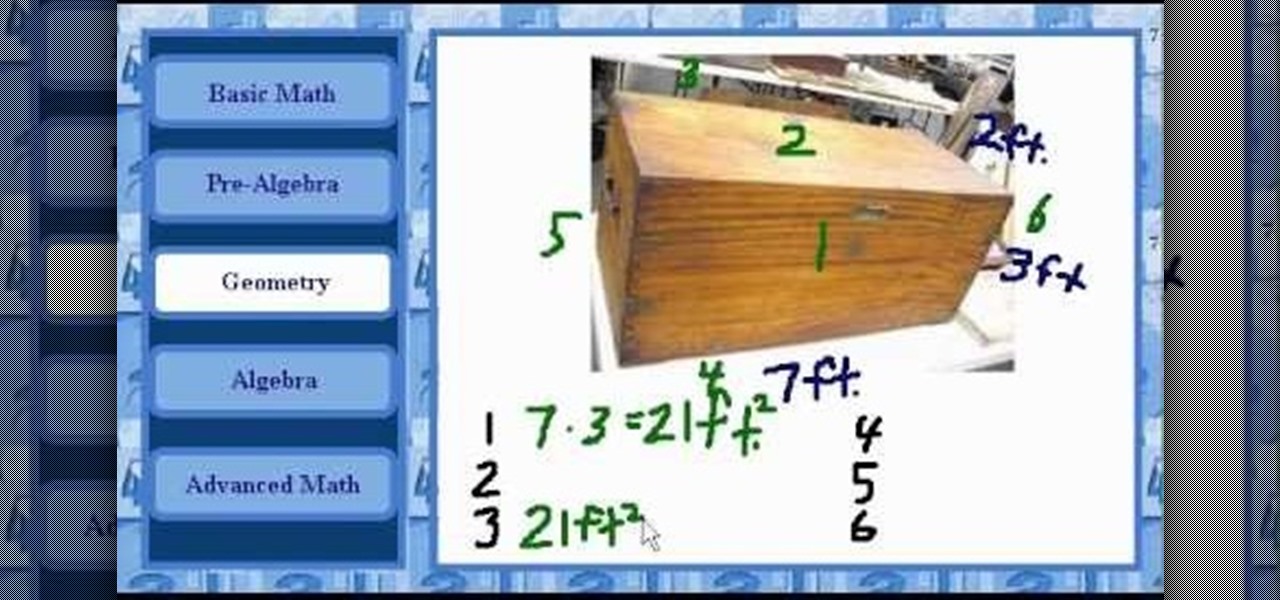
How To: Calculate the surface area of a rectangular solid in basic geometry
With mathematics, as with anything else, not everyone progresses at the same rate. Geometry is no exception. Happily, in the age of Internet video tutorials, this isn't a problem. Those who progress quickly can go beyond what's being taught them and those who are struggling likewise have all the time in the world to catch up. With this free video math lesson, you'll learn how to calculate the surface area of a rectangular solid.

How To: Read a schoolbox ruler
In this tutorial, we learn how to read a school box ruler. A ruler will be divided into inches, each inch will be divided in half. From there, it will be in quarters, then eighths, then sixteenths. Once you understand how the inches get divided up into halves, you will be able to read the ruler better. Start off by counting the small lines that you see on the ruler to get an idea of where the eight, quarter, and half inches are located at. After practicing this, you will be able to read a rul...

How To: Know the ruler
In this tutorial, we learn how to know the ruler. An inch ruler will have 12 inches on it. Each mark will be right next to these. Half of these marks will be a half an inch and the half of those with be an eighth. Half of this will be a sixteenth. On the other side of the ruler, you will see the metric system of the ruler, which is not used in the United States. It has centimeters listed on it instead of inches. To use the ruler, you will need to look at the mark it is on, then count the smal...




